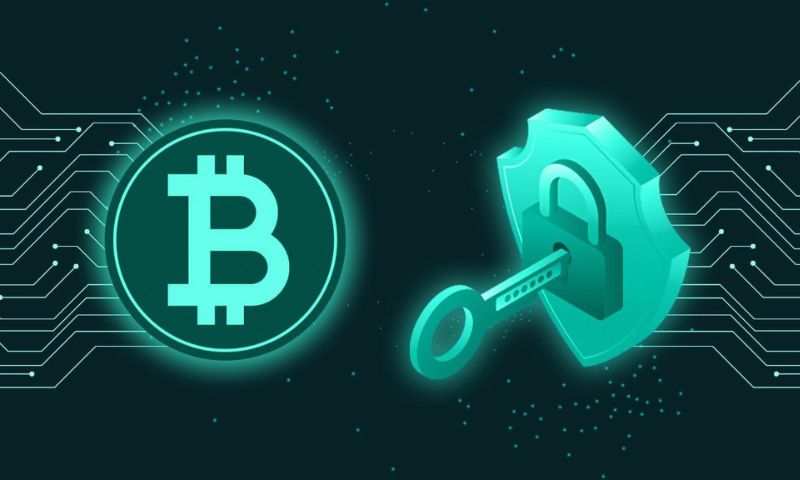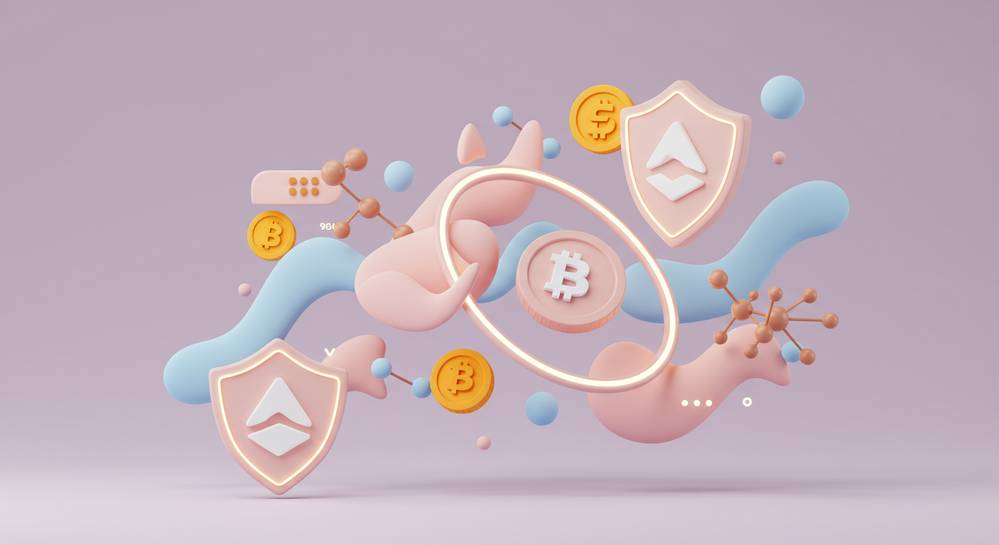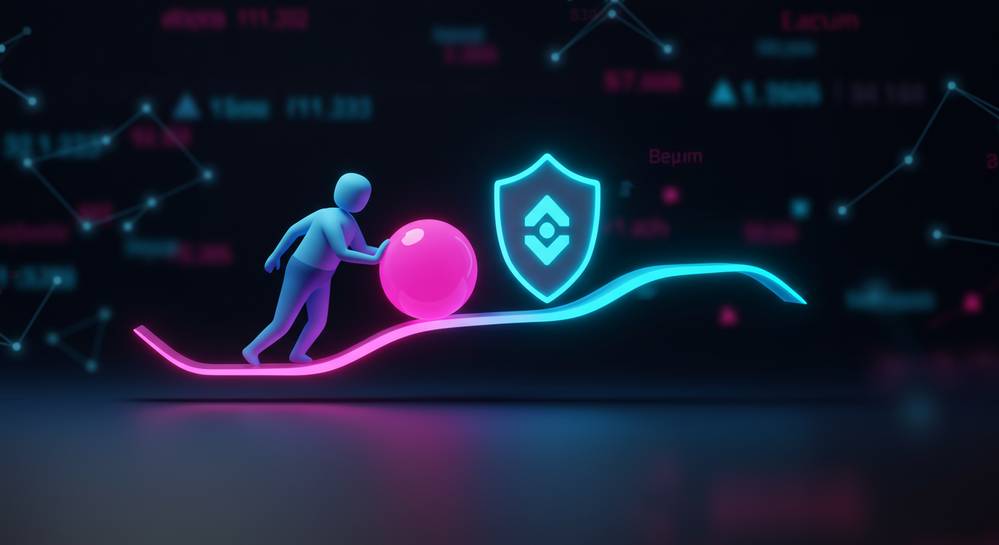How to keep your crypto safe isn’t just wise; it’s crucial in the fierce tide of digital thievery. With crafty hackers lurking, your digital coins need ironclad security. I’ve honed five unbreakable tips to guard your treasure. Think of these as your crypto armor, deflecting every byte-sized arrow aimed at your stash. Up first, we tackle advanced protection strategies so sophisticated, even the most cunning hackers hit a wall. Then, we’ll dive into online vigilance – your ever-watchful eye that never sleeps. We march further to best practices for crypto trading and storage: your blueprint for building a digital Fort Knox. And lastly, we suit up for the future, ready to sidestep every sneaky scam thrown our way. Secure your seatbelts; we’re about to turn your crypto security from mere mortal to superhero status.
Securing Your Crypto: Advanced Protection Strategies
Implementing Multi-Signature Technology for Enhanced Security
Have more than one key for your crypto safe. It’s like a bank vault. You need many keys to open it. This is multi-signature technology. More keys mean better safety.
Why? Say a thief gets one key. They can’t get into your wallet. They need all keys. You keep each key in a different place. One could be with you. Another at home. One more with someone you trust. Thieves would have to get all keys. That’s very hard.
Understanding and Utilizing Hardware Wallets for Cold Storage
Now, let’s talk about keeping your crypto really cold. Like in a freezer, but it’s your money. We mean cold storage. This is using a hardware wallet. A small device like a USB stick. Your digital coins live there. Not online, so much safer.
When you want to trade or use your coins, you plug in your hardware wallet. Do what you need to do. Then unplug it. Away from hackers. These devices – think Ledger Nano S or Trezor – they keep your private keys safe. This is a way to lock down your crypto.
But be smart. The device is small. Easy to lose. Make sure to back it up. Write down your backup seed phrases. Keep them just as safe as your crypto. If you lose the device, you can get your crypto back with your backup.
So, use multi-signature technology. It’s like having several locks on your door. Also, use hardware wallets. They’re small vaults you can hide anywhere. And keep those backups safe. It’s like having a map to your hidden treasure. Only you know where it leads. And that’s how you keep your crypto safe.
Online Vigilance: Safeguarding Your Digital Wallet
The Crucial Role of Two-Factor Authentication
Two-factor authentication (2FA) is a must for your digital wallet. It’s like a double lock. It uses two types of identity checks before you can get in. Think of it as having a door with two locks. The first lock opens with your key—that’s your password. The second lock needs a code. This code changes every time. You get it through your phone or an app. Even if someone steals your key, they can’t get in without the code from the second lock.
Using 2FA means even if a hacker knows your password, they can’t access your wallet. It’s an extra step for logging in, but it keeps your crypto safe. Make sure to turn it on for all your accounts. This way, you keep your digital coins out of reach from bad guys.
Regular Software Updates and the Dangers of Public Wi-Fi
Keep your wallet safe by updating your software often. Hackers love old software. It’s easier for them to break into. When you get a notice to update your phone, computer, or wallet app, do it right away. These updates fix weak spots. They block ways hackers could use to sneak in.
Be careful with public Wi-Fi when you’re dealing with crypto. It’s not safe for trading or checking your wallet. Hackers can watch the Wi-Fi and see what you do. They can grab your passwords or even get into your wallet. Always use a safe internet connection when you’re dealing with money. Better safe than sorry, right?
Using secure Wi-Fi, updating your apps, and using 2FA all make it tougher for thieves to get your crypto. Remember, your digital wallet is like a treasure chest. You wouldn’t leave your treasure out in the open. Keep it locked up tight, and always stay alert. This way, you can enjoy your crypto without worry.

Best Practices for Crypto Trading and Storage
Crafting Strong Passwords and Recognizing Reputable Wallets
Crypto asset protection starts with a strong password. Always create complex, hard-to-guess passwords for your digital wallet security. A mix of letters, numbers, and symbols works best. For example, “C@t5L0v3M0us3!” is better than “catandmouse.” This approach stops most hackers in their tracks.
A reputable crypto wallet is your best friend. It’s a tool that secures your digital coins. Look for wallets with high praise from other users and industry pros. Avoid ones with bad reviews or poor security tracks. Ask yourself: Do I trust this wallet with my money? Your gut feeling often guides you right. Wallets like Ledger Nano S and Trezor are great choices, known for strong security.
Remember to backup your wallet seed phrases. Write them down and keep them safe. They’re your fail-safe if your wallet goes missing or gets damaged.
Educating on the Differences Between Hot and Cold Wallets
Know the difference between hot and cold wallets. It’s a game-changer. Hot wallets connect to the internet and are great for daily use. But they are risky, as hackers can reach them. Cold wallets stay offline, so they’re safer for storing coins you won’t need right away. Think of them as a safe in your home.
Hardware wallet usage is like carrying a digital safe. They store your coins and keep them safe while offline. You only connect them to your computer when you need to make a trade. They offer an extra layer of security for your digital coins. Cold storage methods, like these, are a fortress for your crypto.
Multi-signature technology is another layer of protection. It’s like a bank vault that needs two keys to open. Even if a thief gets one key, they still can’t access your coins without the second. This technology safeguards your crypto on exchanges and in wallets.
Educating yourself on secure trading practices is key. Don’t keep all your coins in one place, especially on an exchange. Exchanges can get hacked, and your coins might be stolen. Split your holdings between hot and cold wallets. It’s smarter and safer.
Stay clear of public Wi-Fi when trading or checking your wallet. Hackers can spy on these networks to steal your data. Use a secure internet connection. Keep your software updated to close any security holes. Attackers exploit old software flaws.
Realize that securing mobile devices is crucial. Phones can get lost or stolen, putting your wallet at risk. Use a strong lock screen and keep your trading apps secure with passwords.
Your crypto journey needs smart choices and a good defense. Use this knowledge to trade and store your digital assets safely. Remember, your peace of mind is priceless.

Future-Proof Securing: Dealing with Emerging Crypto Threats
Evading Phishing Scams and Malware in the Cryptocurrency Sphere
Bad guys want your crypto. Stay smart so they can’t get it. Phishing scams trick you into giving away your info. They send fake emails or texts that look real. They hope you click on a bad link. Don’t fall for it! Always check sender info and website URLs. Be double sure before you click.
Malware is nasty software that steals from you. It can get in if you click on bad links or download from shady places. Always think twice about what you click. Be careful about what you download. Your crypto’s security depends on it.
Protecting against these threats starts with your actions. Learn the red flags. Phishing messages often have weird spelling or sound too good to be true. Malware comes from places that aren’t trusted. Keep a sharp eye! Only download software from sites you know and trust. Secure private keys like they are gold. They’re the gatekeepers to your digital wallet.
Insurance and Custody Solutions: Final Layers of Crypto Security
What if something still goes wrong? Crypto insurance is there for you. It’s a safety net if hackers sneak past your defenses. Check if platforms you use offer it. Even better, get your own for peace of mind.
Custody solutions keep your crypto extra safe. These are services that hold crypto for you. They have super strong security that’s tough for hackers to crack. Great for keeping big amounts of crypto safe. Look for services that follow the rules. They should have checks in place for your safety.
Using these tips makes you a crypto security pro:
- Learn how to spot phishing and avoid malware.
- Don’t trust links or downloads that don’t feel right.
- Keep those keys safe; think of them as the key to your crypto kingdom.
- Consider insurance to cover your assets if hackers get lucky.
- Trust custody solutions for big crypto savings.
Hey, protecting crypto is a big job. But with smart moves, you can be one step ahead of the threats. Make sure you’re using trusted platforms and update software regularly. And remember, always keep your backup seed phrases safe. They’re your crypto life raft.
Staying safe in the crypto world is like being a digital ninja. Dodge the attacks, use clever tricks, and protect your treasure. With these tips, you’re set to keep your crypto secure, now and in the future.
In this post, we’ve explored key ways to lock down your crypto like a pro. From multi-signature tech to smart moves with hardware wallets, you’re now clued in on better cold storage. We’ve tackled online smarts: think rock-solid two-factor authentication and staying updated—no risky business on public Wi-Fi.
Trading and storing your crypto safely? You’ve got this. Create beefy passwords and pick wallets wisely. Hot or cold wallets—it’s clear you know the drill. Ending with a look forward, we’ve dived into dodging new-age scams and adding layers with insurance and custody.
Remember, staying ahead in the crypto game means constant learning and adapting. Use these tips to keep your digital treasure safe. It’s a wild web out there, but now you’re set up not just to survive, but to thrive. Keep these strategies in your back pocket, and you’re all set for a more secure crypto future.
Q&A :
How can I protect my cryptocurrency from theft?
Ensuring the security of your cryptocurrency involves a multi-layered approach. Use strong, unique passwords for all your crypto accounts and wallets, and consider a password manager to keep track of them. Enable two-factor authentication (2FA) to add an extra layer of security beyond just a password. Keep your private keys offline if possible, using hardware wallets which are less susceptible to hacking than online wallets. Stay vigilant against phishing attempts by verifying the authenticity of communication you receive and never disclose your private keys or recovery phrases.
What is the safest way to store cryptocurrency?
The safest way to store your cryptocurrency is by using a hardware wallet. These physical devices store your private keys offline, protecting them from online hacking attempts. Hardware wallets like Ledger Nano S, Trezor, and KeepKey are highly recommended as they require physical interaction to confirm transactions, which greatly reduces the risk of unauthorized access. Additionally, for added security, store your hardware wallet in a secure location such as a safe or a safety deposit box.
Are cryptocurrencies safe from hackers?
Cryptocurrencies, by their nature, are generally secure due to their reliance on blockchain technology which provides a tamper-resistant ledger. However, they are not completely immune to hackers. Wallets, exchanges, and personal accounts can be vulnerable if proper security measures aren’t in place. To protect your crypto assets, use reputable and secure platforms for trading and storing, keep your software updated, be wary of too-good-to-be-true offers, and educate yourself on the latest security threats in the cryptocurrency space.
Can I recover stolen cryptocurrency?
Recovering stolen cryptocurrency is often difficult and may not always be possible. However, there are a few steps you can take. Immediately contact the wallet provider or exchange to report the theft; they may be able to assist in tracking down the lost funds. Reach out to law enforcement and file a report. In some cases, blockchain forensics firms can help trace stolen funds. Preventative measures such as backing up your wallet and keeping your private keys secure are critical, as recovery options are limited once theft occurs.
How do I make a backup for my cryptocurrency?
To make a backup for your cryptocurrency, first ensure you have a record of your wallet’s private key or seed phrase, as these are essential for accessing your funds. For software wallets, use the backup functionality built into the wallet to create an encrypted copy of your data. Store this on multiple secure and encrypted USB drives or external hard drives. For hardware wallets, write down your recovery phrase and store it in multiple secure locations. Remember to keep your backups away from potential physical damage, such as fire or water, and out of reach of unauthorized individuals.




